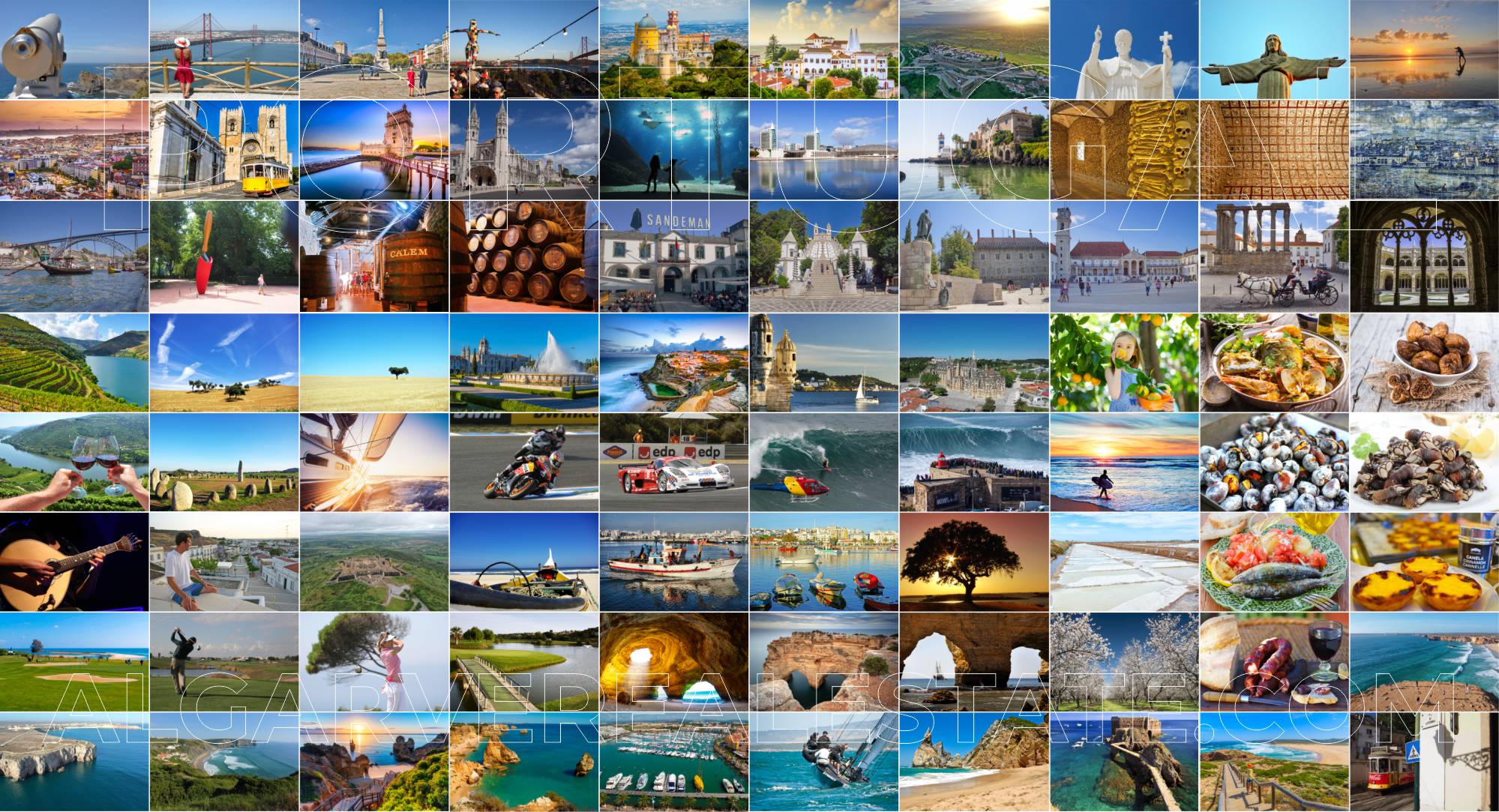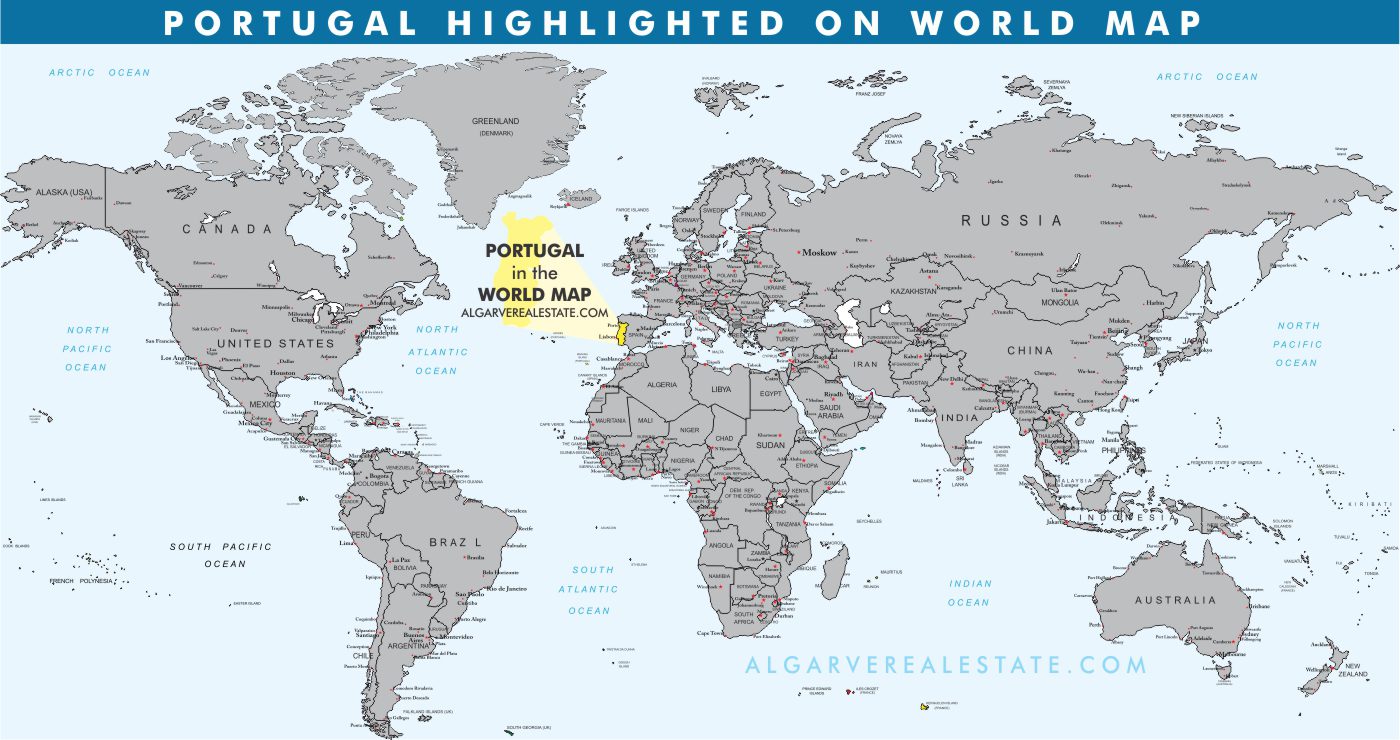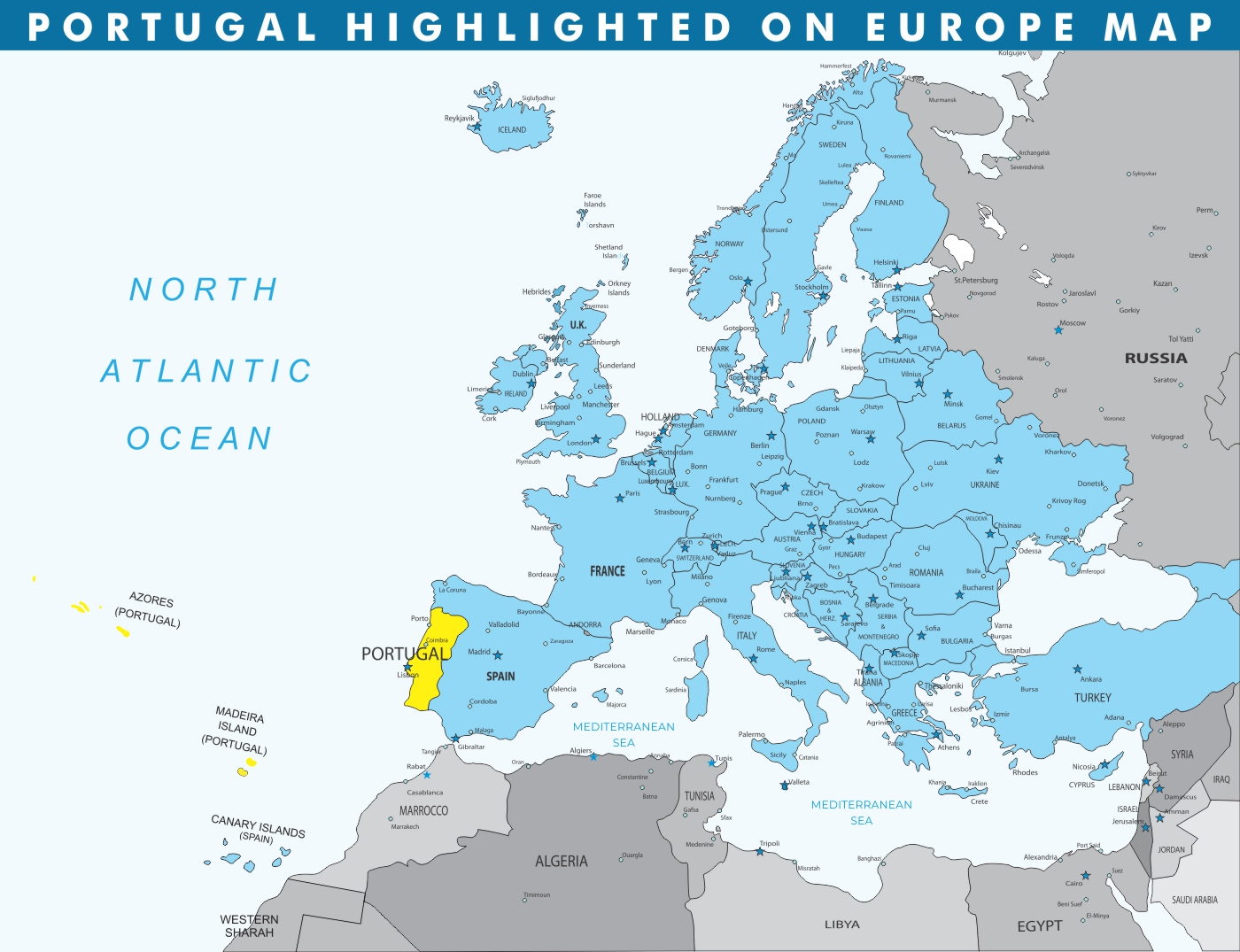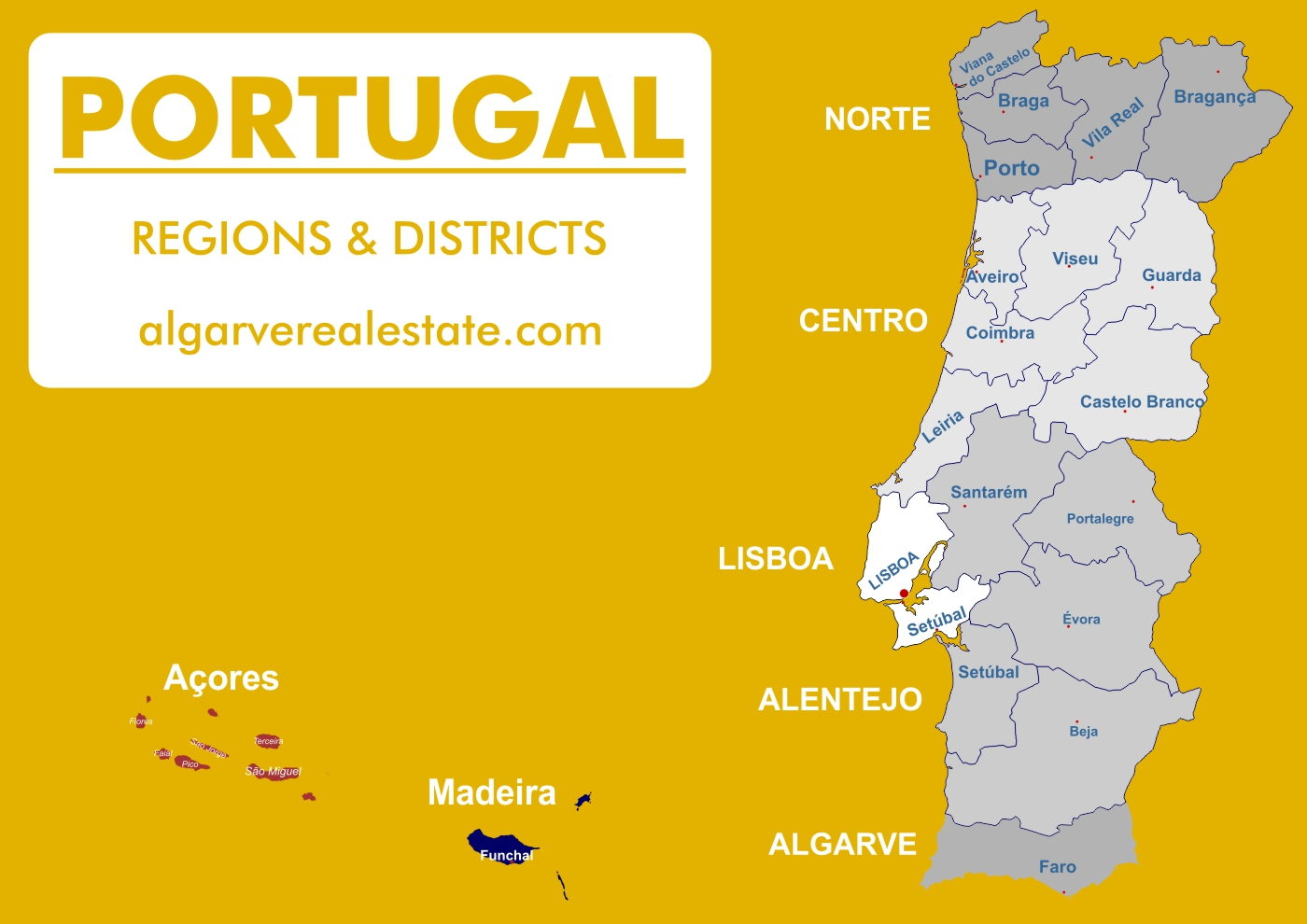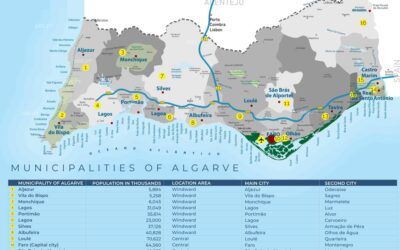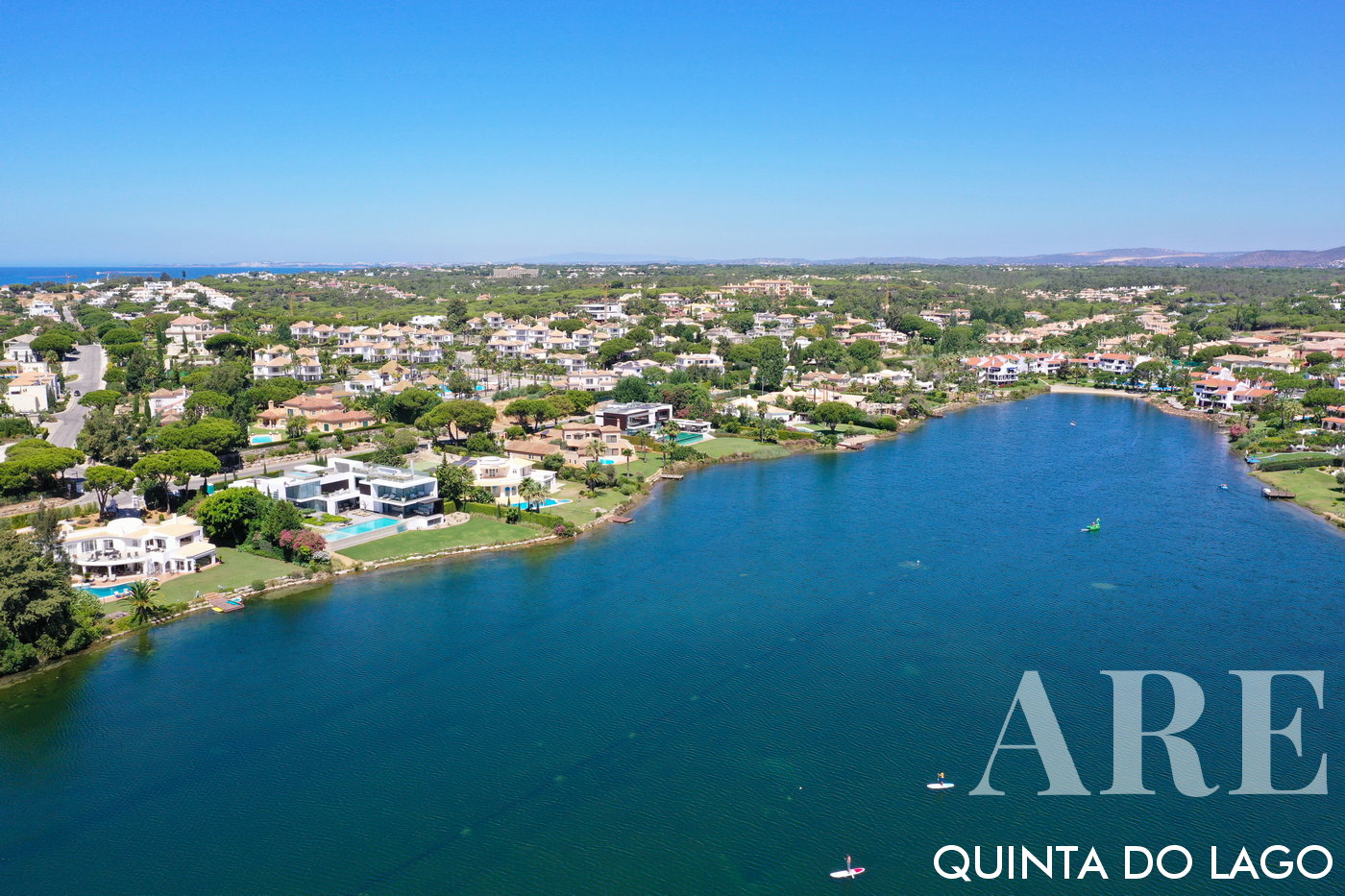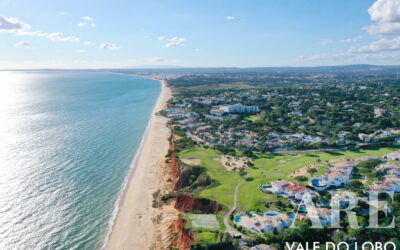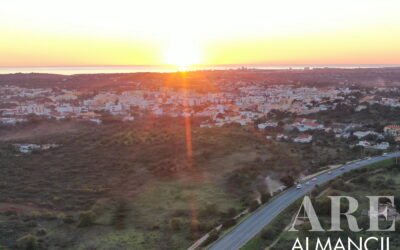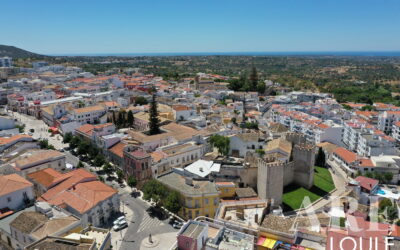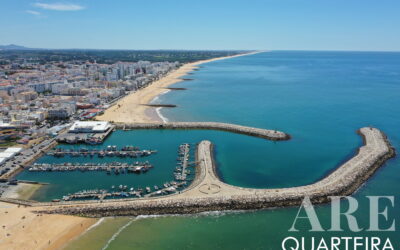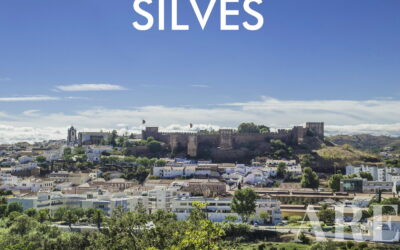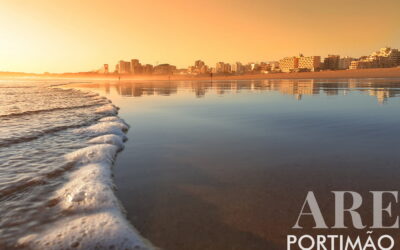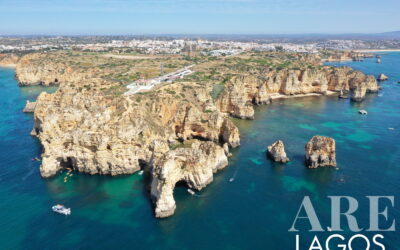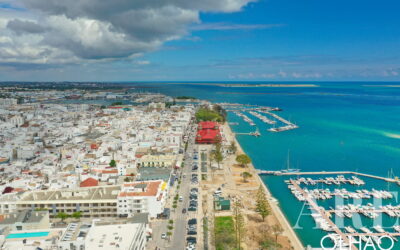All of Portugal in one place!
Portugal is the westernmost country in Europe, comprising seven regions, including the mainland and two autonomous island groups in the Atlantic Ocean: the Azores and Madeira. The mainland stretches about 561 km north to south and 218 km east to west. The country offers diverse environments, attracting residents from around the world.
Portugal offers high-quality resorts, relaxed settings, natural retreats, and idyllic beaches. The Azores and Madeira, islands in the Atlantic, feature stunning landscapes. Cities blend modern European lifestyles with fashion and vibrant nightlife. The country is home to prestigious universities, hosts world surfing championships, and has top-tier football. Its cuisine rivals that of the best chefs, and its wine regions are exceptional. Above all, the welcoming nature of the Portuguese people stands out, making visitors feel at home.
Traveling to Portugal: a person from a non-European country can usually stay in Portugal or any other Schengen Area country for up to 90 days within a 180-day period for tourism, business, or family visits, often without needing a visa. For stays longer than 90 days or for purposes like work or study, a national visa or permit from the specific Schengen country is necessary. Additionally, there are generally open borders between Schengen countries, allowing for ease of movement within this european area.
Portugal most important key features
- Population: As of 2021, Portugal’s population is approximately 10.3 million people.
- Language: Portuguese is the official language of Portugal and is also spoken in other countries such as Brazil, Angola, and Mozambique. While many Portuguese people are proficient in English, it is recommended to learn some basic Portuguese phrases. In the Algarve, English is widely spoken, and due to the region’s proximity to Spain and its popularity among European tourists, people also speak Spanish and French.
- Currency: The official currency of Portugal is the Euro.
- Government: Portugal is a democratic country with a parliamentary system of government.
- History: Portugal has a rich history dating back to the Celts, Romans, and Moors, and is famous for its Age of Discoveries in the 15th and 16th centuries, when Portuguese explorers discovered and colonized territories in Africa, Asia, and the Americas. The country is also notable for its strong presence of the Knights Templar during the Middle Ages. Today, Portugal is home to many historic sites, including castles, palaces, churches, and museums showcasing its heritage and artistic achievements.
- Cuisine: Portuguese cuisine features seafood, hearty stews, pastries, and wines, including the famous port wine from the Douro region. Key dishes include bacalhau (salt cod), cozido (a meat and vegetable stew), grilled sardines, and pastéis de nata (custard tarts). Visitors should also try doces conventuais, traditional sweets originally made by nuns in convents.
- Music: Fado, a traditional style of Portuguese music, is known for its melancholic and soulful melodies.
- Sports: Football (soccer) is the most popular sport in Portugal, with the national team and major clubs such as Benfica and Porto having large followings.
- Landmarks: Iconic landmarks in Portugal include the Tower of Belém and Jerónimos Monastery in Lisbon, the Roman Temple of Évora, and the Palace of Pena in Sintra.
- Beaches: Portugal’s coastline spans over 940 km along the Atlantic Ocean, not including the coastlines of the islands of Azores and Madeira. The Algarve region in the south is particularly sought after for its beaches. Renowned surf destinations include Sagres, Guincho, Ericeira, Peniche, and Nazaré.
- Religion: Fátima in Portugal is a renowned attraction for Catholics worldwide. The majority of Portugal’s population identifies as Roman Catholic, with a significant minority either non-religious or adhering to other religions.
- Football (soccer): is the most played sport in Portugal, boasting significant participation and a dedicated fan base, having produced renowned players such as Cristiano Ronaldo. Other popular sports in Portugal include surfing, golf, paddle tennis, and various outdoor activities such as hiking, cycling, running, climbing, and birdwatching.
- Festivals: Portugal hosts a variety of popular festivals throughout the year, including Carnaval in Madeira, Ovar, Loulé, and other cities, Festa de São João in Porto, Festa de Santo António in Lisbon, and Festa do Senhor do Bonfim in Setúbal. Other notable festivals include Festa da Ria in Aveiro, Rock in Rio Lisboa, and various summer music festivals such as Super Bock and Zambujeira do Mar festival.
- Natural beauty: Portugal is a country of stunning natural beauty, with diverse landscapes ranging from mountains and forests to coastal plains and islands. Some of the most beautiful natural attractions include the Douro Valley, Serra da Estrela, and the Peneda-Gerês National Park.
Portugal is also a cultural place
Portugal is also known for its rich historical and cultural heritage, including castles, palaces, and archaeological sites, as well as its significant maritime history and the Age of Discoveries. The country enjoys a mild and sunny climate, which contributes to the quality of life and attracts visitors from around the world. The cost of living in Portugal is relatively lower compared to other European countries, making it an attractive option for living. Furthermore, Portugal is often ranked as one of the safest countries globally, providing a sense of security and well-being for its residents. Finally, the country boasts a good public transportation network and modern infrastructure that facilitate mobility and connect Portugal to other European countries and international destinations.
Where in the word is Portugal
Portugal is a country located in southwestern Europe, on the Iberian Peninsula. It is bordered by the Atlantic Ocean to the west and south, and by Spain to the east and north. Portugal has a latitude ranging approximately from 32° to 42° North, and longitude ranging from 6° West to 9°30′ West.
Portugal highlighted on Europe map
Exploring the Size and Dimensions of Portugal
We can drive from the most northerly point of Portugal, near Valença do Minho, to the Algarve, in the extreme south of Portugal, covering approximately 650 km (403 miles) in less than 6 hours. Mainland Portugal has a coastline that stretches approximately 850 kilometers (528 miles) along the Atlantic Ocean from north to south. In terms of east to west, Portugal’s width varies due to its irregular shape, ranging from a minimum width of around 145 kilometers (90 miles) to a maximum width of approximately 270 kilometers (167 miles) at its widest point.
How to get to Portugal
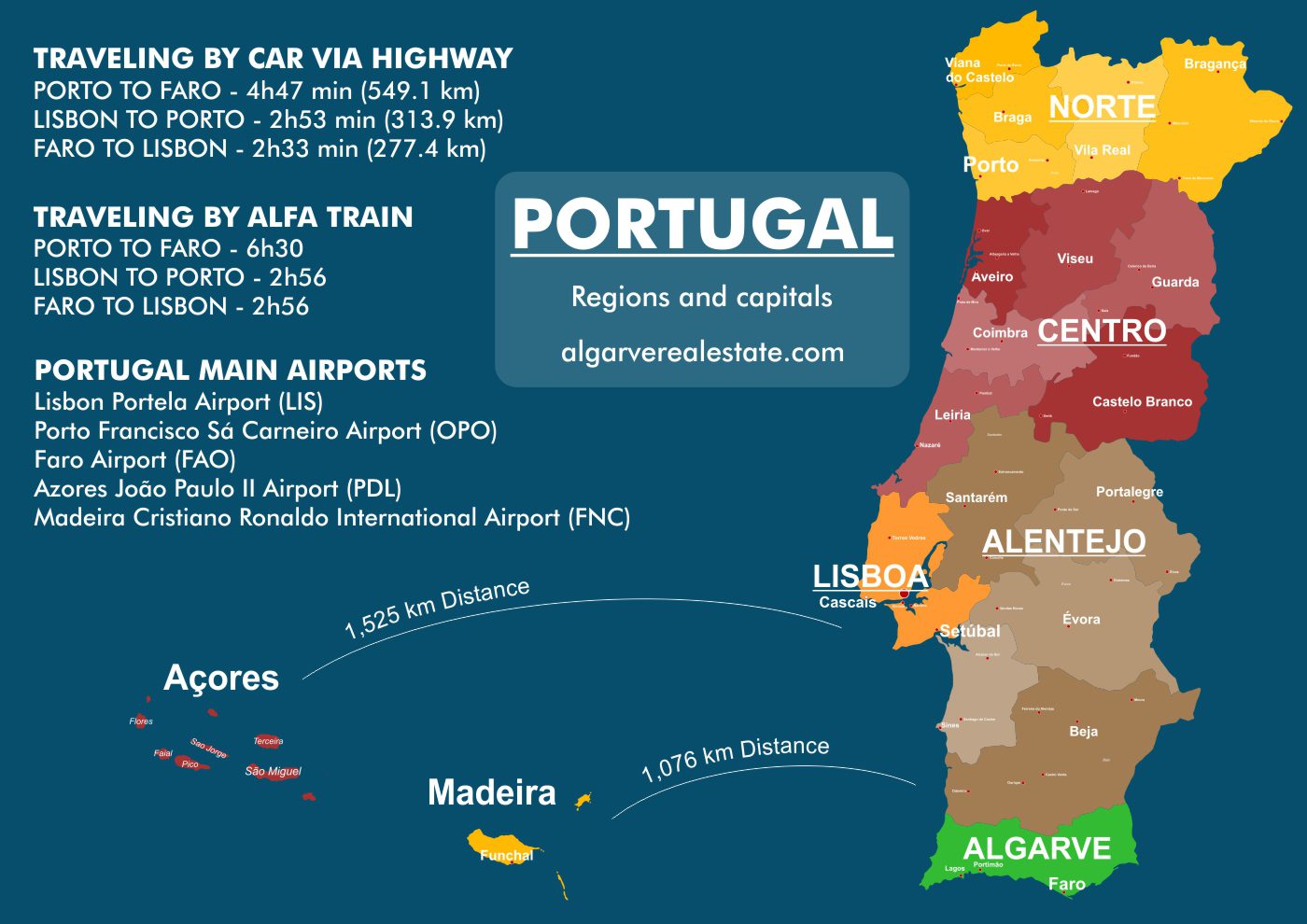
Map of Portugal with the regions, districts, distances between major cities and islands of Azores and Madeira
Travel options to Portugal include air, sea, and land transportation. The most convenient and popular way to reach Portugal is by airplane, with direct flights available from many international destinations to major airports such as Lisbon, Porto, and Faro. For those who prefer driving, Portugal has a well-developed highway network that connects with Spain and other European countries. Train travel is also an option, with international trains connecting Portugal to Spain, France, and Germany for travelers from other European countries. In addition, Portugal has several seaports, including the ports of Lisbon, Leixões, and Sines, which offer regular ferry connections to neighboring countries and the surrounding islands.
Portugal by Car: Driving Distances Between Main Cities
Some Portugal routes provide a glimpse into the diverse and beautiful landscapes of Portugal, including coastal towns, historic sites, natural parks, and more. Whether you’re looking for a city escape or a scenic road trip, Portugal offers a wide range of destinations to explore.
From Lisbon:
- Lisbon to Elvas: 2 hr 31 min (211 km) via A6
- Lisbon to Fátima: 1 hr 35 min (126 km) via A1
- Lisbon to Serra da Estrela Nature Park, Seia-Covilha, Centro, Seia: 3 hr 40 min (300 km) via A1 and A23
From Porto:
- Porto to Lisbon: 3 hr 6 min (313 km) via A1
- Porto to Bragança: 2 hr 21 min (211 km) via A4
- Porto to Faro: 5 hr 5 min (554 km) via A1 and A2
From Faro:
- Faro to Lisbon: 2 hr 40 min (278 km) via A2
- Faro to Seville, Spain: 2 hr 15 min (199 km) via A22 and A-49
- Faro to Lagos: 1 hr 4 min (90.5 km) via A22
- Faro to Sagres Fortress: 1 hr 27 min (118 km) via A22
- Faro to Sines: 2 hr 40 min (197 km) via A22 and N120
Portugal Airports
Portugal has 3 major airports in the mainland, and 2 others in the archipelagos of Madeira and Azores:
- Lisbon Airport (LIS) – Humberto Delgado Airport: Located in the capital city of Lisbon, it is the largest and busiest airport in Portugal, serving as a hub for TAP Air Portugal, the country’s flag carrier airline.
- Porto Airport (OPO) – Francisco Sá Carneiro Airport: Situated near Porto, the second-largest city in Portugal, this airport is another important gateway for both international and domestic flights.
- Faro Airport (FAO) – is particularly popular among European tourists due to its proximity to all European capitals. It is a sought-after destination all year round, with mild temperatures in the winter allowing for outdoor activities while much of Europe is frozen, and in the summer, it attracts crowds with its beautiful beaches and lively party scene.
- Madeira Airport (FNC) – Cristiano Ronaldo Madeira International Airport, located on the island of Madeira, this airport serves as a crucial connection point for the Madeira archipelago, including the main island and Porto Santo.
- Ponta Delgada Airport (PDL) – João Paulo II Airport, situated on São Miguel Island in the Azores, this airport is the primary gateway to the Azores archipelago, connecting the islands to mainland Portugal and other international destinations.
Portugal by Cruise ship
There are several ports in Portugal that receive cruise ships, including Lisbon, Porto, Funchal (Madeira), and Ponta Delgada (Azores). Lisbon is the busiest cruise port in Portugal, welcoming many large cruise ships throughout the year. The port of Porto, located on the Douro River, is also a popular stop for river cruises. The island of Madeira and the Azores are frequently included as stops on transatlantic and round-the-world cruises, with Funchal and Ponta Delgada serving as the main ports of call, respectively.
Ways to Explore and Travel Around Portugal
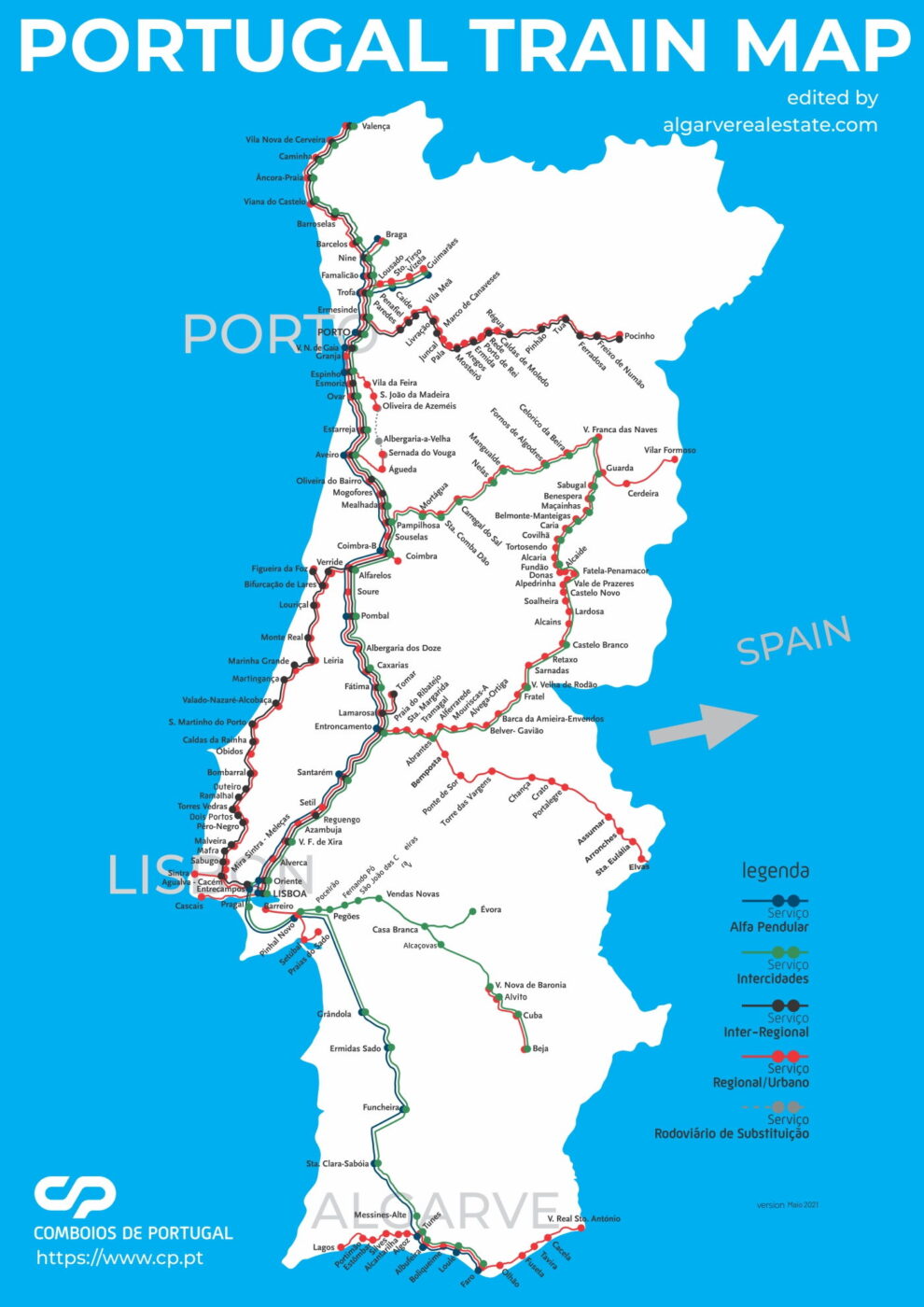
Map of Portugal showing the train lines, with different colors representing the various types of train services including fast trains, regional trains, and intercity trains
The best way to travel inside Portugal in shorter distances within major cities like Lisbon or Porto is by walking, cycling, or using public transportation such as buses, trams, and metro systems. For longer distances between cities, the most popular and convenient modes of transportation are:
- Train – Alfa trains (high-speed trains – https://www.cp.pt/) – connects cities such as Faro to Lisbon, to Porto, to Braga, Guimarães, Coimbra, Aveiro, Faro, and others.
- Bus – Buses connecting almost all cities in Portugal and Spain main cities, like Faro to Seville, can be found at https://rede-expressos.pt/ and https://www.flixbus.pt/.
- Car renting – Renting a car can give you the freedom to explore remote areas and enjoy scenic drives along the coast or through the countryside.
- Private guide like Xrei (https://www.xrei.com/) can show you all the best-kept secrets in Portugal.
- Flights within Portugal – Flights offered by regional airlines like Sevenair (https://www.sevenair.com/) provide daily and charter flights to various destinations in Portugal, including Bragança, Vila Real, Viseu, Cascais, and Portimão. Major airlines such as TAP Portugal, EasyJet, and Ryanair offer daily flights to and from the main airports in Portugal, including Lisbon, Porto, Faro, and to the islands of Madeira and the Azores. These airlines provide a wide range of destinations across Europe and beyond, making it easy to travel to and from Portugal. Madeira’s Funchal Airport and Azores’ Ponta Delgada Airport have direct flights from major European cities such as London, Paris, Frankfurt, Madrid and others.
- Cruises – Several ports in Portugal receive cruise ships, including Lisbon, Porto, Funchal (Madeira), and Ponta Delgada (Azores). Lisbon is the busiest cruise port in Portugal, welcoming many large cruise ships throughout the year. The port of Porto, located on the Douro River, is also a popular stop for river cruises. The island of Madeira and the Azores are frequently included as stops on transatlantic and round-the-world cruises, with Funchal and Ponta Delgada serving as the main ports of call, respectively.
- Traditional taxis, local transfers such as shuttle buses and private transfers, and ride-hailing services such as Uber are widely available in major cities. Luxury transfers are available for those seeking a higher level of comfort and service.
How to live in Portugal for more than 3 months
If you are a citizen of Switzerland or any EU (European Union) or EEA (European Economic Area) country, you do not need a visa or residence permit to live in Portugal. However, you must register your residence if you intend to stay for more than three months.
If you are a citizen from any country other than Switzerland or the EU/EEA, you’ll need to obtain a residence visa or permit, depending on your nationality and circumstances. To do this, first determine the appropriate visa or residence permit (investment, family reunification, study, work), then gather the required documents, such as a valid passport, proof of financial means to support yourself in Portugal, health insurance, and others. Submit your application at the Portuguese consulate or embassy in your home country, and once in Portugal, apply for a residence permit at the Portuguese immigration office (SEF – Serviço de Estrangeiros e Fronteiras). We always recommend that, if you can afford it, you consult a lawyer to help you with this process, as this may increase your chances of getting it faster and easier.
Types of visas for living in Portugal
- Tech Visa: A visa created to attract qualified professionals in the technology and innovation sectors to work for certified Portuguese companies.
- D7 Visa (Passive Income Visa): This visa is for individuals who can demonstrate a stable income or financial resources, such as retirees or remote workers, and wish to reside in Portugal without working locally.
- Golden Visa (Residence Permit for Investment Activity): This program grants a temporary residence permit to non-EU/EEA investors who make significant investments in Portugal, such as real estate purchases, capital transfers, or job creation.
- Short-stay Visa (Schengen Visa): This visa is for short visits, tourism, or business purposes, and it allows you to stay in Portugal and other Schengen countries for up to 90 days within a 180-day period.
- Temporary Stay Visa: This visa is for specific purposes, such as pursuing professional training, engaging in research or educational activities, or providing temporary services. It is usually valid for a stay between 90 days and one year.
- Residence Visa: This is a pre-entry authorization for foreigners intending to apply for a residence permit in Portugal for purposes such as work, study, family reunification, or entrepreneurship. Each of these options has different visa requirements. Upon arrival in Portugal, foreigners holding a residence visa must apply for a residence permit at the immigration office (SEF).
Our Insights on the Process of Obtaining a Portugal Residence Permit or Visa
Knowledge is for those who know. Our specialization is in tourism and real estate. We understand Portugal like no one else, and when it comes to real estate, we can modestly say that our knowledge is well above average, with years of experience and connections to the best professionals in the field. As for legal matters, we provide a brief summary with the help of lawyers.
- If you require more detailed information or assistance with legal matters, we suggest contacting qualified lawyers who specialize in Portuguese law, who can offer expert guidance and support.
- If you what to solve the process by your self, visit the official immigration services website at (https://www.sef.pt/),
- the European Judicial Network for information on legal systems in EU countries, including Portugal (https://e-justice.europa.eu/),
- or the Portuguese Ministry of Justice’s official website, which offers information on various legal matters such as family law, labor law, and immigration law (https://www.justica.gov.pt/).
With that clarified, we can then assist you in your real estate search on our website, or through a direct call with the number you can find on our properties or contact page.
Where to live in Portugal
Portugal is a small but fascinating country, divided into 7 regions, each further subdivided into districts, with its own unique characteristics and attractions that distinguish them from each other. One main difference that can be used to distinguish the regions is their geography and topography.
The Norte region is located in the mountainous region of northern Portugal and has a cooler and wetter climate than the Algarve region in the south, which has a warmer and drier Mediterranean climate.
The Lisbon and Tagus Valley region is dominated by the Tagus River, which flows through the center of Lisbon and influences the region’s landscape and culture.
The Centro region is known for its central location and diverse landscapes, from the coastal beaches of Aveiro to the snowy mountains of Serra da Estrela.
The Alentejo region is known for its vast open landscapes, fields of cork trees, vineyards, and olive groves.
The Azores and Madeira regions, being islands in the middle of the Atlantic Ocean, have distinct geography, biodiversity, and cultural heritage.
The diverse lifestyles of Portugal’s 7 regions
Portugal is a diverse country, with 7 different regions, each with its own unique characteristics and attractions.
- The Norte region offers a vibrant urban lifestyle in cities such as Porto and Braga, while also providing scenic rural areas along the Douro river. This region is known for its historical sites, natural landscapes, and vibrant cities like Porto. Major districts include Viana do Castelo, Braga, Vila Real, Bragança, and Porto.
- The Centro region mixes urban amenities with historic charm in cities like Coimbra and Aveiro, as well as smaller towns and villages with a slower pace of life. This region boasts a mix of cultural heritage, natural beauty, and historical landmarks. Key districts are Aveiro, Viseu, Guarda, Coimbra, Castelo Branco, and Leiria.
- The Lisbon and Tagus Valley region boasts Lisbon, the cosmopolitan capital city of Portugal with a bustling nightlife and vibrant arts and culture scene, as well as coastal towns, historic sites, and natural beauty. This region includes the capital city, Lisbon, and the surrounding areas. It is known for its rich history, stunning architecture, and vibrant atmosphere. The districts in this region are Lisbon and Setúbal.
- The Alentejo region is known for its vast open landscapes, vineyards, and olive groves, with a slower pace of life in small towns and villages. Alentejo is characterized by its rolling plains, picturesque villages, and vineyards. It is a predominantly rural region that includes the districts of Portalegre, Évora, and Beja.
- The Algarve region is famous for its golf courses, historic places like the Sagres fortress, sunny beaches, and lively nightlife. However, it also has quiet villages and secluded areas for those seeking a more tranquil lifestyle. Located in the southernmost part of Portugal, the Algarve region is famous for its beautiful beaches, coastal landscapes, and tourist attractions. The region consists of a single district, Faro.
- In the islands, the Azores offer a unique blend of cosmopolitan culture and natural beauty, with bustling cities and serene landscapes for outdoor activities. The Madeira region boasts a mild climate, natural beauty, and outdoor recreation opportunities in both urban and historic settings. The Azores is an autonomous archipelago in the Atlantic Ocean, made up of nine volcanic islands. They are divided into three groups: Eastern (São Miguel and Santa Maria), Central (Terceira, Graciosa, São Jorge, Pico, and Faial), and Western (Flores and Corvo). Madeira consists of the main island of Madeira, the smaller island of Porto Santo, and several smaller uninhabited islands.
Portugal regions table
Table with the regions of Portugal, their respective districts, and the largest, second-largest, third-largest, and fourth-largest cities in each district:
| Region | District | Largest City | Second-largest City | Third-largest City | Fourth-largest City |
|---|---|---|---|---|---|
| Norte | Viana do Castelo | Viana do Castelo | Ponte de Lima | Valença | Monção |
| Norte | Braga | Braga | Guimarães | Barcelos | Vila Nova de Famalicão |
| Norte | Porto | Porto | Vila Nova de Gaia | Matosinhos | Maia |
| Norte | Vila Real | Vila Real | Chaves | Peso da Régua | Ribeira de Pena |
| Norte | Bragança | Bragança | Mirandela | Macedo de Cavaleiros | Vimioso |
| Norte | Aveiro | Aveiro | Ovar | Espinho | São João da Madeira |
| Centro | Coimbra | Coimbra | Figueira da Foz | Pombal | Lousã |
| Centro | Viseu | Viseu | Lamego | Tondela | Mangualde |
| Centro | Guarda | Guarda | Seia | Gouveia | Pinhel |
| Centro | Castelo Branco | Castelo Branco | Covilhã | Fundão | Sertã |
| Centro | Leiria | Leiria | Caldas da Rainha | Marinha Grande | Pombal |
| Lisboa | Lisboa | Lisbon | Sintra | Amadora | Cascais |
| Lisboa | Santarém | Santarém | Tomar | Entroncamento | Rio Maior |
| Lisboa | Setúbal | Setúbal | Almada | Barreiro | Montijo |
| Alentejo | Portalegre | Portalegre | Elvas | Ponte de Sor | Campo Maior |
| Alentejo | Évora | Évora | Montemor-o-Novo | Estremoz | Reguengos de Monsaraz |
| Alentejo | Beja | Beja | Aljustrel | Serpa | Moura |
| Algarve | Faro | Faro | Albufeira | Portimão | Loulé |
The Azores archipelago divided into three main island groups: the Eastern Group, the Central Group, and the Western Group. Here’s a list of the groups and the islands within each group:
Eastern Group:
- São Miguel: The largest and most populous island in the Azores.
- Santa Maria: The southernmost island in the archipelago.
Central Group:
- Terceira: Home to Angra do Heroísmo, a UNESCO World Heritage Site.
- Graciosa: Known for its volcanic landscapes and Furna do Enxofre.
- São Jorge: Famous for its elongated shape, cliffs, and fajãs (flat coastal areas).
- Pico: The second-largest island and home to Mount Pico, the highest peak in Portugal.
- Faial: Known for the city of Horta, a significant marina for transatlantic sailors, and Capelinhos Volcano.
Western Group:
- Flores: Known for its lush green landscapes, waterfalls, and lakes.
- Corvo: The smallest and least populated island in the Azores
| Region | Island Group | Largest City | Second-largest City | Third-largest City | Fourth-largest City |
|---|---|---|---|---|---|
| Região Autónoma dos Açores | São Miguel | Ponta Delgada | Ribeira Grande | Lagoa | Vila Franca do Campo |
| Região Autónoma dos Açores | Terceira | Angra do Heroísmo | Praia da Vitória | – | – |
| Região Autónoma dos Açores | Pico, Faial, and others | Horta (Faial) | Madalena (Pico) | Velas (São Jorge) | – |
Madeira Archipelago comprises the main island of Madeira, and the smaller island of Porto Santo
| Region | Island Group | Largest City | Second-largest City | Third-largest City | Fourth-largest City |
|---|---|---|---|---|---|
| Região Autónoma da Madeira | Madeira | Funchal | Câmara de Lobos | Santa Cruz | Machico |
| Região Autónoma da Madeira | Porto Santo | Vila Baleira | – | – | – |
Portugal’s Diverse Topography
Portugal’s topography is diverse, with a range of mountainous regions, rolling hills, and coastal plains, all stretching along the Atlantic Ocean. The northern part of the country boasts mountain ranges like the Serra do Marão, Serra do Gerês, and Serra da Estrela, which is mainland Portugal’s highest mountain range, with its highest peak reaching an altitude of 1,993 meters (6,539 feet). The central region of Portugal is characterized by rolling hills and low-lying plains, and is home to the Tagus River, which runs through the country and forms a vast valley, where the capital city of Lisbon is situated. Meanwhile, the southern region of Portugal, the Algarve, is famous for its 100’s of kilometers of beaches and is characterized by a series of low-lying coastal plains, cliffs, and rocky outcrops. The region is also home to the Serra de Monchique, serra Espinhaço de Cão, and serra do Caldeirão, a small mountain chain that separates the Algarve from the Alentejo to the north. The Serra de Monchique starts in Monchique and extends to Cachopo, near Tavira, offering stunning views of the surrounding countryside. The region’s topography is characterized by rolling hills and rugged terrain, with the highest peak in the Serra de Monchique reaching over 900 meters in elevation. The unique topography, combined with the warm climate, makes this region a popular destination for outdoor activities and a haven for those seeking a break from the colder weather in other parts of the country.

